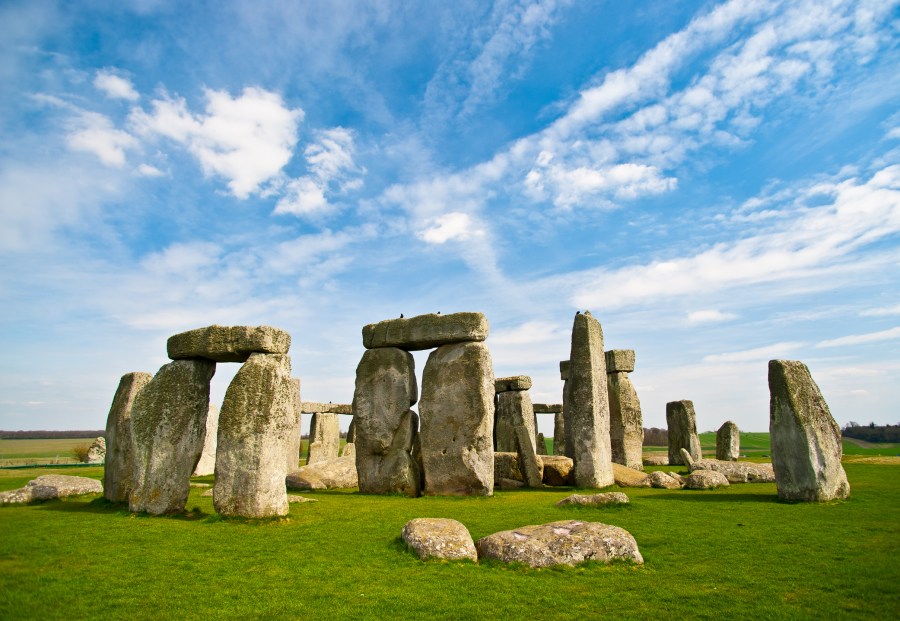
Stonehenge, one of the world’s most iconic monuments, is full of mysteries. Located in Wiltshire, England, Stonehenge is a ring of massive standing stones and stone arches dating back to 3000 BC. Researchers have little knowledge of how the stones were transported, who constructed Stonehenge, or why the structure was built in the first place.
However, the scientific community has recently uncovered evidence that may hold the key to solving the mysteries of Stonehenge. Read on to learn about Stonehenge’s historical background, the scientific theories surrounding the mysterious structures, and the exciting new findings.
Stonehenge Took Over 1,000 Years to Build
The construction of Stonehenge began 5,000 years ago in the Neolithic Age, which ranges from approximately 12,000 years ago to the rise of civilization. Amazingly, Stonehenge took over 1,000 years and thousands of laborers to assemble. So how did this (literally) monumental, generation-spanning construction project begin?

Experts believe the monument’s builders started by landscaping several large banks on the site. Later on, builders began digging pits and adding timber posts. After a few centuries, the ancient builders installed massive standing stones instead of timber posts. Unfortunately, not all the original pieces of Stonehenge remain at the site today. Some stones are missing, while others have been damaged.
The First Construction Phase
Stonehenge had six long construction phases. In the first phase, around 3000 BC, the builders dug a circular ditch that was 330 feet in diameter with an inner bank and a smaller outer bank in the open grassland. During this phase, builders created two entrances: a big one on the northeast side and a smaller one to the south.
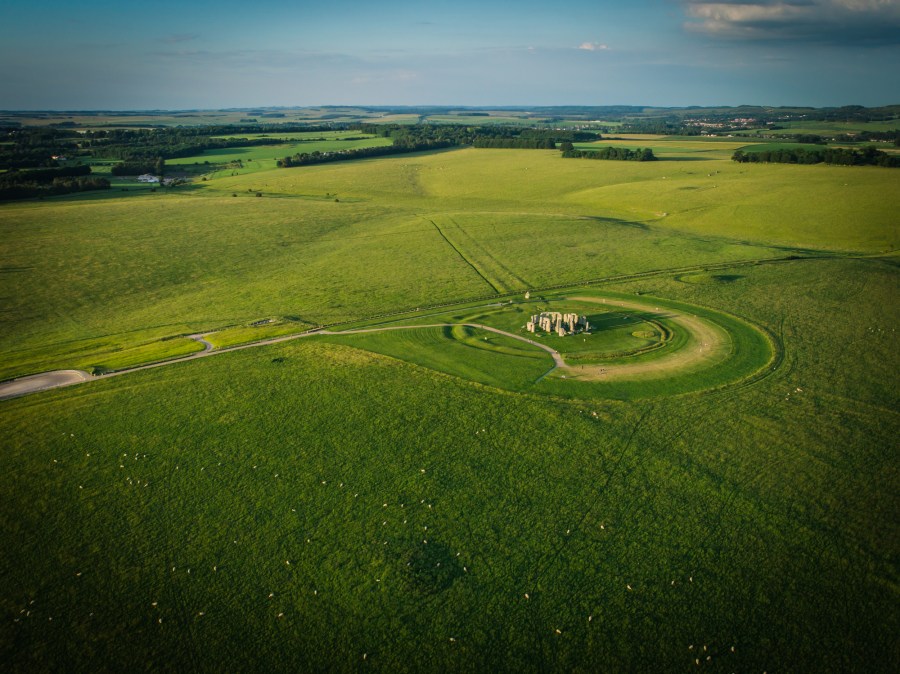
The builders also dug 56 pits inside the inner bank that are now known as the Aubrey holes, named after John Aubrey, the man who discovered the holes in 1666. Experts still don’t know the purpose of the pits. However, some believe the pits contained erected timber posts. Experts believe the Heel Stone was erected during this phase.
The Final Construction Phases
During the second stage of construction, the builders added timbers to the northeast entrance, around 2640 BC. It wasn’t until the third stage that Stonehenge’s familiar structure started to take shape: This was when builders added stones to the monument.

In the fourth phase, 30 standing stones were placed to form an outer circle, which surrounded five stone arches arranged in the shape of a horseshoe. The builders then installed a ring of stones inside the horseshoe.
The fifth and sixth construction stages occurred around 2030 BC. During these phases, the builders dug two more rings of holes around the stones.
Creators Used Simple Tools to Build Stonehenge
The builders of Stonehenge had relatively rudimentary tools at their disposal. According to the Daily Mail, primitive tools such as deer antlers and simple pulley systems were used to build the monument. Today, large stones like the ones used in the construction of Stonehenge would require a crane or forklift to move, making the monument’s construction even more incredible.
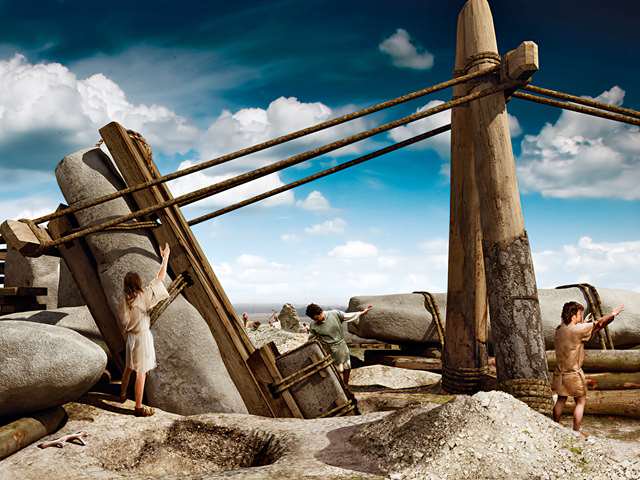
In order to install the stones, the builders first dug large ditches with a sloping side as the base. The builders then lifted up the stones with plant fiber ropes and strong wooden poles. Weights helped to keep the stones standing upright while they were raised and then lowered into the holes. To secure the stones in position, the constructors filled up the ditches with rocks and rubble.
Stonehenge United the Descendants of the Neolithic Britons
While people native to the British Isles, known today as Neolithic Britons, initiated the formation of Stonehenge over 5,000 years ago, this group’s descendants took on the construction of Stonehenge. They did so by using improved tools to help arrange the stones. Archaeologists have uncovered artifacts, tools and bones to reinforce this theory.

Researchers believe the builders who moved the bluestones were part of the social elite in their community. Experts further theorize that after transporting the bluestones, the community would celebrate by gathering for feasts. The challenges of building Stonehenge and the celebrations united thousands of workers in the community.
Parts of Stonehenge Are Missing
Experts believe pieces of Stonehenge have gone missing since it was completed. Previously, the center is thought to have included an oval of 30 smaller stones. However, many of those stones have gone missing. Of the original five stone arches, only three still stand. In the outer stone circle at Stonehenge, two huge stones are missing.

Some of the remaining stones have been chipped or broken. Initially, Stonehenge contained two entrances. Today, there are more gaps and causeways in the outer ring.
Between the missing pieces and 4,000 years of damage and decay, researchers face many hurdles when trying to reconstruct the original Stonehenge.
Where Did the Stones Come From?
Stonehenge was made with two types of stone: sarsen stone and bluestones. Sarsen stones came from the nearby Marlborough Downs of Wiltshire. These stones can also be found in Berkshire, Essex, Oxfordshire, Dorset and Hampshire. The bluestones used in Stonehenge originated in Wales, over 200 miles away.
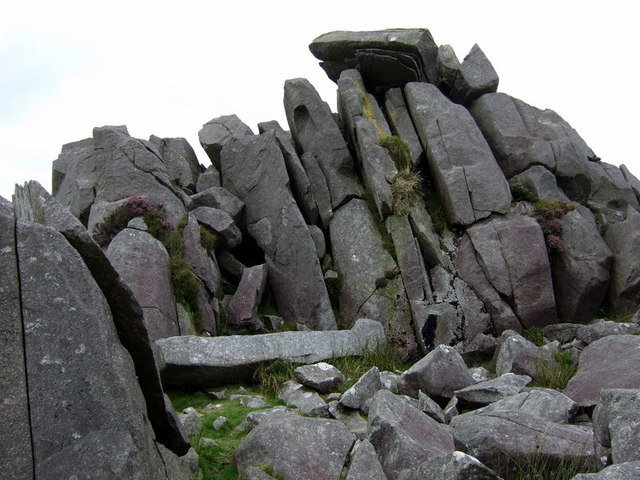
Experts believe that the bluestones were transported from Wales after the sarsen stones were in place. Archaeologist Timothy Darvill explains, “They sort out the local stuff first, and then they bring in the stones from Wales to add to the complexity of the structure.”
Fun fact: Bluestones don’t actually appear blue unless they are broken or wet.
Sarsen Stones Weigh 25 Tons Apiece
Sarsen stones and bluestones are so heavy that some experts can’t believe humans carried them to Stonehenge. Sarsen stones are a lot bigger and heavier than bluestones. The Sarsen stones used in Stonehenge weigh a whopping 25 tons and are up to 30 feet tall.
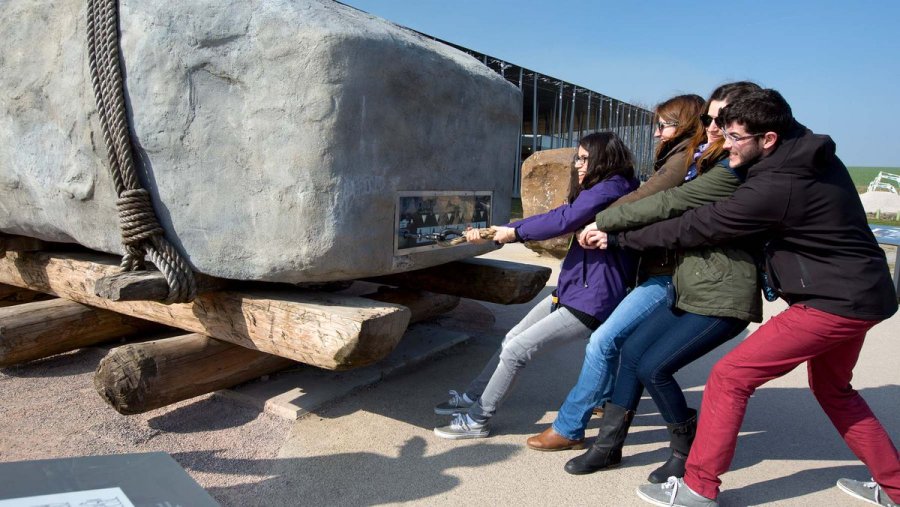
The most massive sarsen stone at the site, the Heel Stone, weighs even more at 30 tons. To give people a good idea of how enormous sarsen stones really are, Stonehenge’s visitor center created an exact replica of a sarsen stone.
The smaller stones, bluestones, only weigh four tons. Although the average bluestone doesn’t weigh as much as a sarsen stone, bluestones are still very heavy. Imagine how challenging it must have been to move four-ton stones for 200 miles. Experts still are not entirely sure how the Neolithic Britons did it.
How Did the Giant Stones Get There?
So how on earth did the Stonehenge builders move these enormous stones to the build site? Researchers are still baffled by how the builders transported the stones. The size and weight of the stones must have made them each incredibly difficult to move. However, there are a couple hypotheses.

One theory suggests that builders moved the stones using only the simple tools they had available. They pulled the bluestones on sledges to the Bristol Channel, where the stones floated on rafts to the construction site. A member of the Stonehenge Riverside Project, Josh Pollard, explains, “We know where some of those rocks started. We can see where they’ve been extracted from the rock outcrops, and we know they end up at Stonehenge. That is, if you like, the evidence of movement.”
Geologists Think Glaciers Moved the Massive Stones
Another hypothesis suggests that the builders didn’t actually transport the bluestones all the way from Wales. Earth scientist Dr. Brian John argues that thanks to the Ice Age, the movement of glaciers brought the bluestones close to the construction site. As a result, builders used the nearby stones in the monument.

John also believes that Stonehenge was left unfinished because not enough stones could be found to complete the structure. He claims other monuments in the United Kingdom show the same pattern of builders collecting local stones. However, many experts disagree with John because his hypothesis lacks credible evidence.
Did Aliens Build Stonehenge?
One of the most popular and strangest theories about Stonehenge is that ancient aliens were responsible for its construction. Swiss author Erich von Däniken claims that aliens used Stonehenge as their landing pad. According to Däniken, this explains how the heavy stones were able to be transported over such a vast distance.
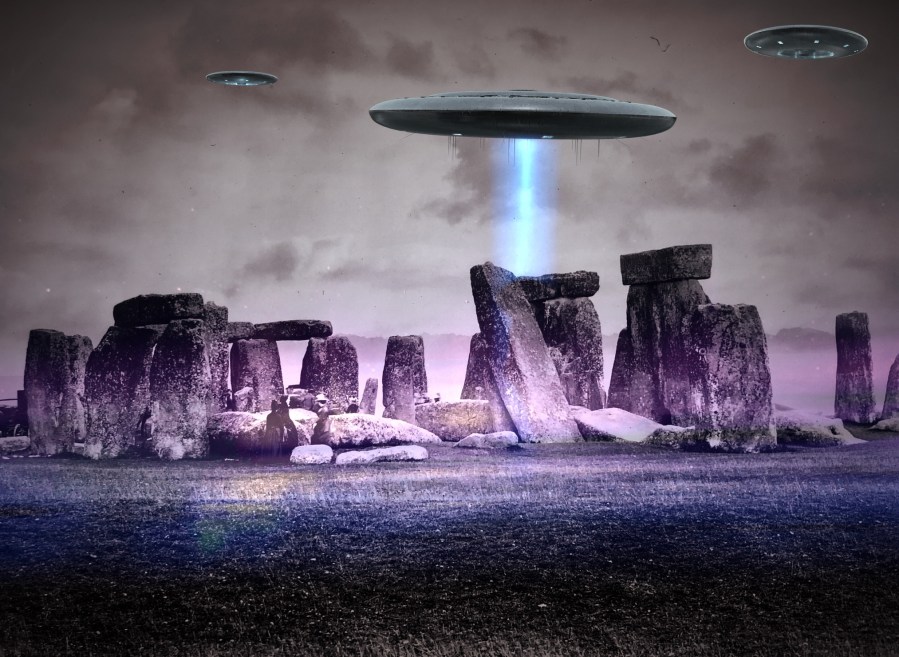
However, researchers have proven that humans could still carry the heavy stones with the tools available at the time, easily debunking the alien theory. Däniken’s alien theory also lacks sufficient evidence. The Stonehenge builders may have created the monument to honor the stars above, but the reason likely had nothing to do with aliens.
The Popular Devil Theory
If you thought the ancient alien theory was weird, just wait until you hear the one based in Christian theology. The theory states that it was actually the devil, not human builders, who arranged the stones. Yep, you read that right. The devil. So how did the devil supposedly arrange the stones?

According to the myth, the devil threw one of the stones at a friar, and the stone struck the friar’s heel. This myth led to historians to name this specific stone the “Heel Stone”. When the Heel Stone hit the ground, the stone remained in the ground forever. Although it is undoubtedly a great story, this supernatural tale has also—unsurprisingly—been debunked.
Stonehenge Is Featured in Arthurian Legend
According to an Arthurian legend, Merlin created Stonehenge using magic to transport the stones from Mount Killaraus in Ireland. According to “Historia Regum Britanniae” by Geoffrey of Monmouth, King Aureoles Ambrosias asked Merlin where to bury Britain’s slaughtered nobles. Merlin told the king to prepare an army to collect some magical stones from the stone circle in Ireland. Ancient giants created the stone circle, also known as the Giants’ Rings.
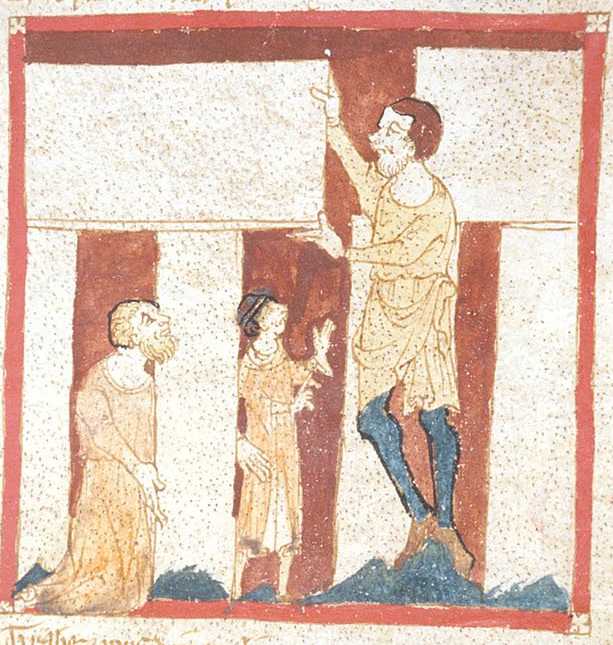
When the soldiers arrived in Ireland, they had to fight the Irish to get the stones. The soldiers won the battle, but failed to gather the stones on their own. Merlin used his powers to load the stones onto the soldiers’ ships, and went back to England. During medieval times, many people believed the Merlin story to be true.
Stonehenge Initially Served As a Cremation Site
Archaeologists found over 50,000 cremated bone fragments at Stonehenge, supporting the theory that the area was a giant cremation site, or at least the last known resting place for the remains. The cremated remains belonged to 63 separate individuals.

Archaeologist Professor Mike Parker Pearson and his team found the cremated human remains in a ring of pits from the beginning stages of the monument. The cremated remains date back to around 3000 BC. To mark the graves, the builders positioned bluestones in a large circle. Pearson believes the site was used as a circular graveyard for nearly 200 years.
Many Researchers Agree That Stonehenge Was a Burial Ground
Experts have argued about the purpose of Stonehenge for centuries, but the majority of researchers agree the area served as a massive burial ground. Over 200 of the deceased are buried at Stonehenge. However, it’s a mystery why the dead were laid to rest at the site in the first place.
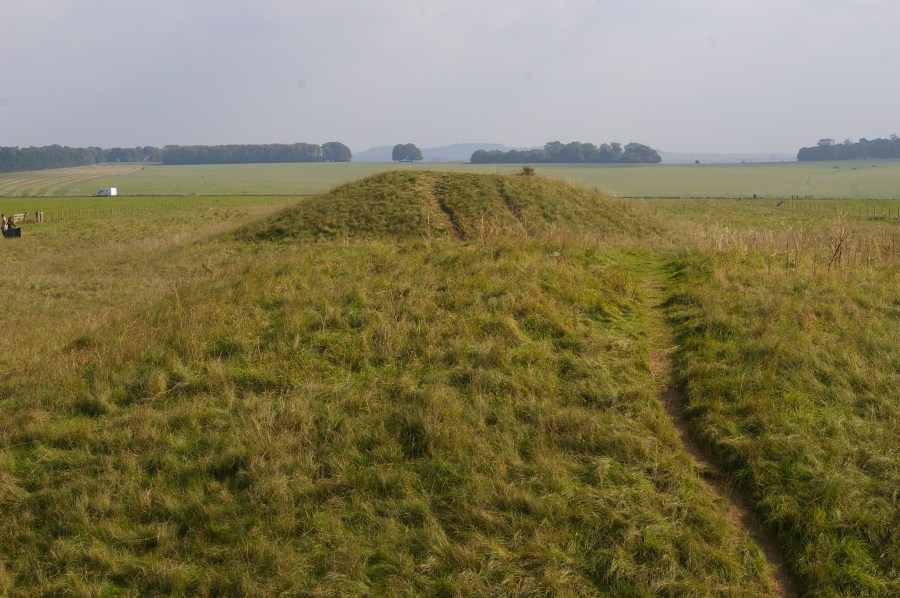
Some of the remains date back from 500 years to 3000 BC. Researchers unearthed skeletons of men, women, children and even a newborn baby at Stonehenge. Archaeologist Mike Pitts says, “The whole history of the monument is inseparably linked to death and burial—but I believe that there are hundreds more burials to be found across the site, which will tell us more of the story.”
Were Elite Families Buried at Stonehenge?
When archaeologists first removed the skeletons from Stonehenge, they thought the bones were unimportant and returned them to the site in 1935. The researchers also assumed the remains only belonged to men. However, when archaeologists came back and exhumed the site again in 2013, they learned a few new things. The remains belonged to almost equal numbers of men, women and children.
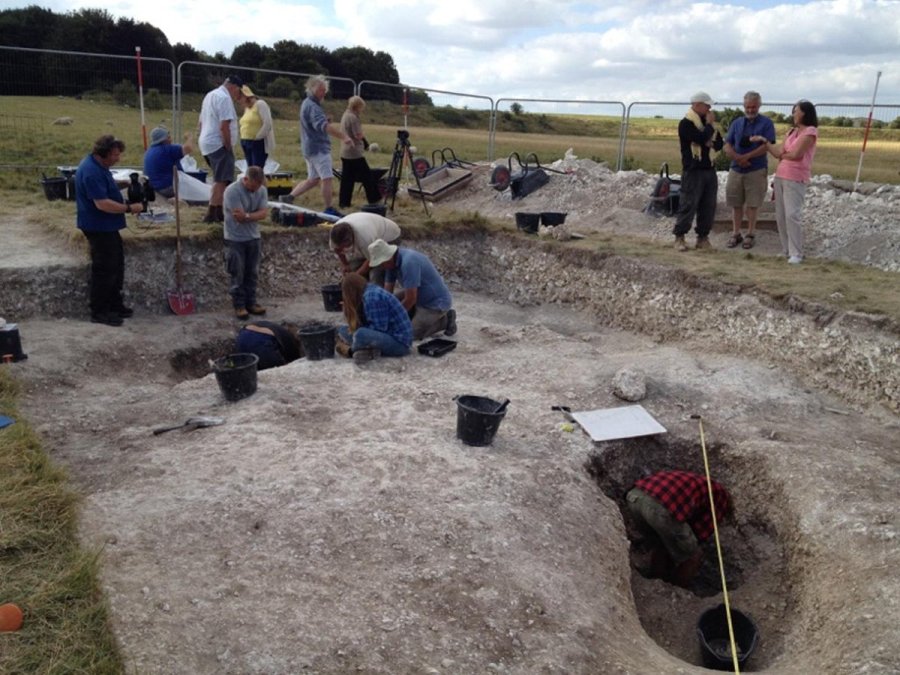
In one of the burials, archaeologists believe they found a bowl that was used to burn incense. They also found a mace head, an item commonly associated with the elite class of the time. Researchers continue to speculate that these skeletons may belong to religious and political leaders.
A Place to Celebrate the Astronomical Calendar
Some experts believe that Stonehenge is linked to astronomy. The sun rises over the Heel Stone every year on June 21, the summer solstice. Since the monument aligns with the sunrise during the summer solstice, researchers think Stonehenge is connected to the study of the stars.
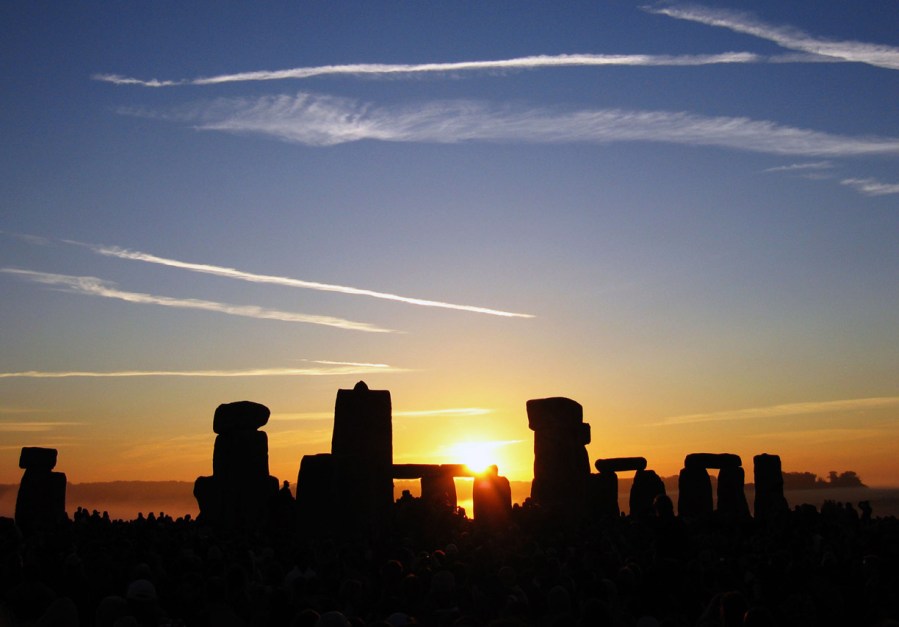
Experts also think the prehistoric community honored the winter solstice at Stonehenge. On December 22, the sun sets over Heel Stone. Archaeologists have found evidence that people in the region slaughtered pigs in December and January for mid-winter celebration feasts.
Some Researchers Believe Stonehenge Was a Site for Healing
Another theory implies that Stonehenge may have been a place of healing. Archaeologists have found evidence that those who were sick visited the monument hoping to find a cure. Many skeletons discovered in the cemetery had signs of illness or injury. One of the remains that researchers found suggested the man suffered from a shattered kneecap and a poisonous abscess in his jaw.
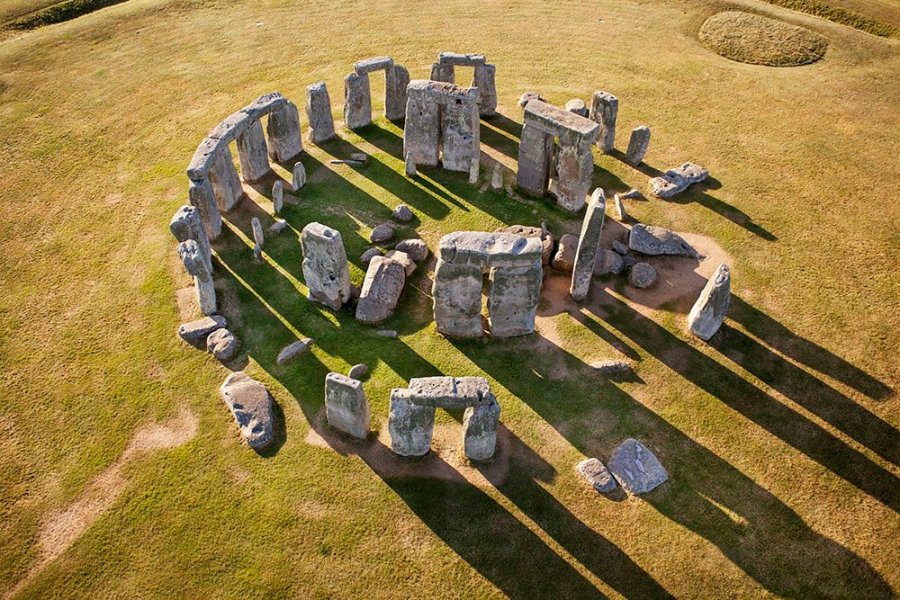
Those who sought healing likely believed the bluestones from Wales contained supernatural powers. Over time, the bluestones at Stonehenge also have been chipped away, possibly by ancient people and visitors looking for talismans with healing powers. Archaeologists Timothy Darvill and Geoffrey Wainwright believe these findings confirm that Stonehenge was a place for ancient healing.
The Stones Hold Acoustic Properties
Have you ever yelled in an empty lecture hall or church and heard your echo? According to experts, the stones created the same amazing acoustic conditions. A researcher from the University of Salford in the United Kingdom, Bruno Fazenda, says, “As they walk inside they would have perceived the sound environment around them had changed in some way. They would have been stricken by it, they would say, ‘This is different.'”
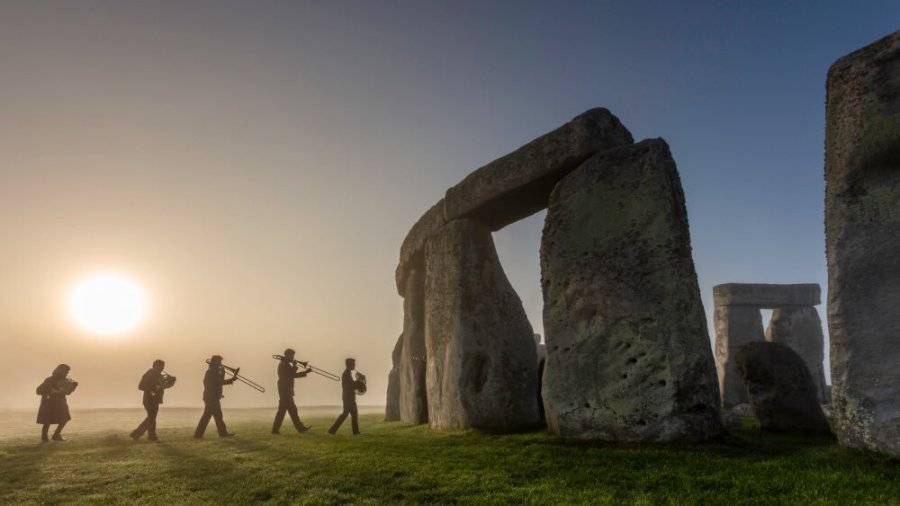
Researchers describe the sound as closer to a reverberation—a repeated echo—than an echo. When you stop yelling, you can still hear the reflected sound for a few seconds.
Examining Stonehenge and Its Replica
In 2011, Fazenda and his colleagues tested Stonehenge’s acoustic properties to understand reverberation. However, since pieces of Stonehenge were missing, the researchers also tested the acoustics of a Stonehenge replica in Maryhill, Washington to gain more insight. The duplicate in Mary Hill serves as a memorial to soldiers from World War I.
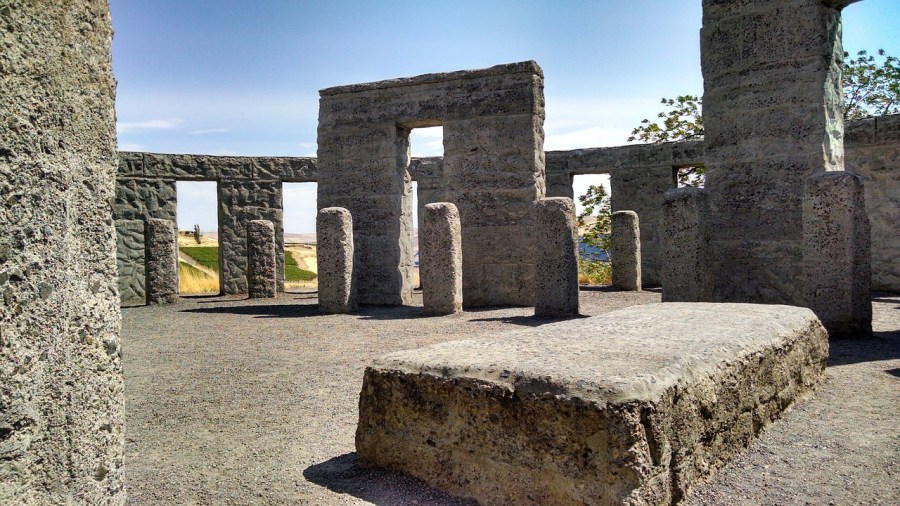
Fazenda and his team noticed that both Stonehenge and the replica had acoustics comparable to those found in lecture halls. “What we found in Maryhill as a model for Stonehenge was you could almost stand behind a stone and keep talking with a good level of voice, and people would be able to hear you somewhere else,” says Fazenda.
Bluestones Made Ringing Noises
The stones at Stonehenge do more than just reverberate. The bluestones also produce ringing sounds when they are tapped, similar to bells. This quality seems to support the theory that bluestones were specifically chosen for their acoustic properties. Recent research has revealed that most, if not all, the bluestones used in Stonehenge have these acoustic properties.

Sound specialist Jon Wozencroft and archaeo-acoustic expert Paul Devereux from the Royal College of Art studied thousands of bluestones and discovered the majority of the stones rang. Devereux explains, “It was a noteworthy soundscape. With a significant percentage of the actual rocks making metallic sounds like bells, gongs, tin drums, etc, when tapped with small, handheld ‘hammerstones.'” Devereux and his team still aren’t sure whether the builders chose the bluestones solely because of their acoustic properties, but these facts definitely hint at it.
Was Stonehenge a Place of Religious Worship?
Another theory suggests that Stonehenge was a religious center controlled by priests. During the 17th and 18th centuries, many people thought Stonehenge was a Druid temple, formed by ancient Celtic pagans. John Aubrey, who discovered the Aubrey holes at Stonehenge, also associated the monument with Druids.

However, some experts found that Stonehenge existed at least 2,000 years before Druids. This fact doesn’t stop modern-day Druids from believing Stonehenge is a sacred and religious destination. According to the Los Angeles Times, some Druids have created their own monuments with the same design of Stonehenge as a religious center.
Why Did Neo-Druids Hold a Religious Ceremony at Stonehenge?
It’s normal for Stonehenge to receive hundreds of visitors from all over the world. However, one unusual visit from a group of Neo-Druids turned into a massive religious ceremony. In 1905, over 700 Neo-Druids gathered at Stonehenge to honor their spiritual heritage.
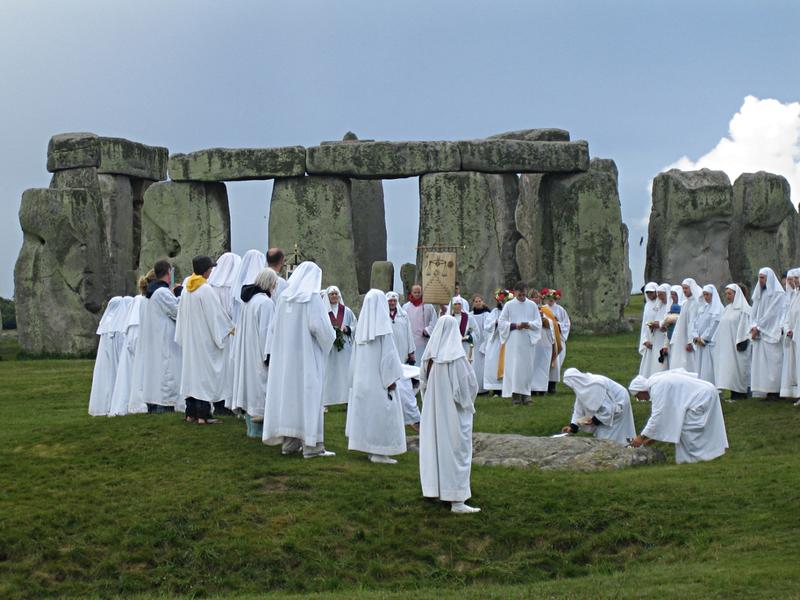
The men performed an initiation ceremony to admit 259 new members into their organization, the Ancient Order of the Druids. The press heavily ridiculed the celebration because the men dressed in white robes and had on fake beards. A few years later after the ceremony, the local landowner tried to limit access to the site and wanted to charge admission. Neo-Druids responded, asserting that the landowner’s actions violated their religious freedom. Today, the site is currently owned by the British government and managed by English Heritage. The closest you can get to Stonehenge is about 10 yards away.
Researchers Used Lasers and Found Art Carved on the Stones
Over time, researchers found new developments on Stonehenge. In 2012, carvings found on the monument’s stones suggest that Stonehenge was a prehistoric art gallery. According to the Independent, 72 early Bronze Age carvings were cut into five of the stones. Currently, it’s impossible for the naked eye to see the carvings, but a detailed laser scan can detect the images. During the Bronze Age, the carvings would have been visible because the stones weren’t damaged yet.

Based on the laser’s survey, the carvings included 71 Bronze Age axe heads and one Bronze Age dagger. The axe heads point to the sky, while the dagger points downward. Experts believe the axe head carvings are linked to storm deities. The creators may have carved the images to help protect crops from storm damage.
Some of the Stonehenge Builders Lived in Wales
With new technology, scientists can learn more about the Stonehenge builders. Initially, experts believed the builders lived close to Stonehenge. However, in 2018, a group of scientists from the University of Oxford discovered that some of the ancient builders lived in Wales, the home of Stonehenge’s bluestones.

John Pouncett, a member from the Oxford School of Archaeology, adds, “The cremated remains from the enigmatic Aubrey Holes and updated mapping of the biosphere suggest that people from the Preseli Mountains not only supplied the bluestones used to build the stone circle, but moved with the stones and were buried there too.”
5,000-Year-Old Skeletons
Scientists gained new insight that some of the Stonehenge builders also lived in West Wales after analyzing 5,000-year-old remains from Stonehenge. The scientists studied 25 skulls and bones from the 56 Stonehenge pits that were originally excavated in the 1920s.
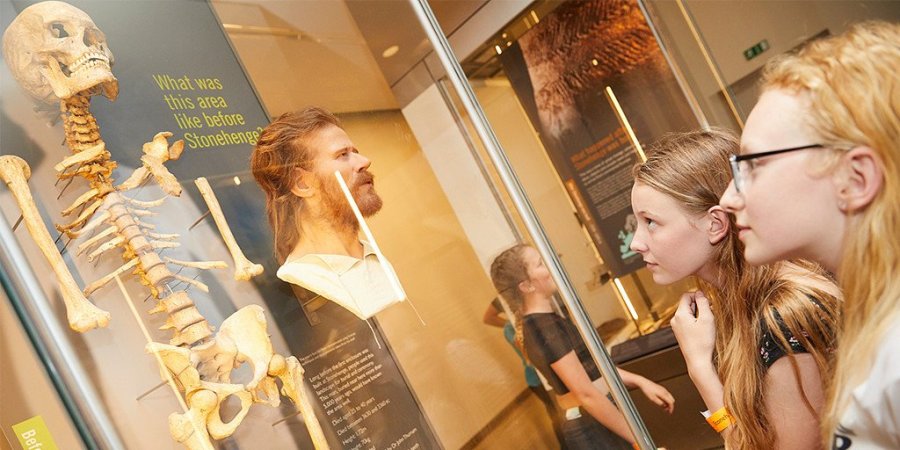
The researchers used strontium isotope analysis to establish at least 10 of the buried people “did not spend the last decade of their life near Stonehenge.” During the late Neolithic period, the ancient builders moved between the site and Wales. After the builders passed away, their bodies were cremated away from Stonehenge. Their remains were returned to Stonehenge for burial.
Researchers Used DNA to Discover the Origins of the Builders
In 2019, researchers found the Britons who built Stonehenge descended from migrant farmers. This was determined by analyzing DNA from the inner ear bone of a 9,000-year-old skeleton known as Cheddar Man. Cool and dry burial conditions helped preserve the DNA of Cheddar Man’s remains, found in Cheddar Gorge in Somerset.

Cheddar Man wasn’t the only skeleton Stonehenge researchers analyzed. The research team also inspected DNA from 47 Neolithic farmer skeletons between 6,000 and 4,500 years old and six Mesolithic hunter-gatherer skeletons between 11,600 and 6,000 years old. Analysis of skeletons from different ages allowed the researchers to identify changes in the area’s population over time.
Farmers from Turkey at Stonehenge?
After examining DNA from the skeletons found at Stonehenge, the results revealed the population’s ancestors originated from the Eastern Mediterranean region. These farmers came to the British Isles around 4000 BC, before Stonehenge was built in 3000 BC. In 4000 BC, only hunters and gatherers lived in Britain. When the farmers arrived in Britain, they brought their agricultural methods, pottery, and religious beliefs.

UCL Professor and author of the study, Mark Thomas, adds, “The transition to farming marks one of the most important technological innovations in human evolution. It first appeared in Britain around 6000 years ago.” As researchers were to find out later, once farming found its way to the area, it was there to stay.
Farmers Gradually Replaced the Area’s Hunter-Gatherer Population
Researchers expected the DNA to show a mixed population of farmers and hunter-gatherers throughout the Neolithic period in Britain. However, they found that the hunter-gatherer population diminished drastically during the Neolithic period, without a resurgence. These findings will help shed further light on the population that built Stonehenge, giving researchers a better understanding of the agricultural and social developments of the Neolithic period.
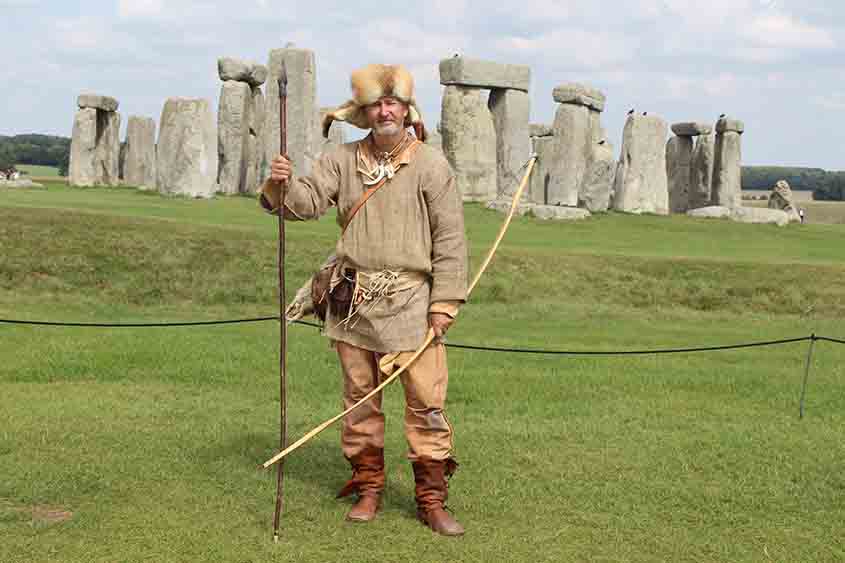
Thomas talks about the decline of hunter-gatherers when farmers arrived, saying, “For over 100 years archaeologists have debated if…[farming] was brought to Britain by immigrant continental farmers, or if was adopted by local hunter-gatherers. Our study strongly supports the view that immigrant farmers introduced agriculture into Britain and largely replaced the indigenous hunter-gatherers populations.”
Will We Ever Solve the Mysteries of Stonehenge?
Although researchers have found new evidence that may help tell us the real story about Stonehenge, many aspects of the monument remain unknown. Was Stonehenge a religious temple, a graveyard, a healing ground, or all three? Currently, scholars don’t have all the answers.
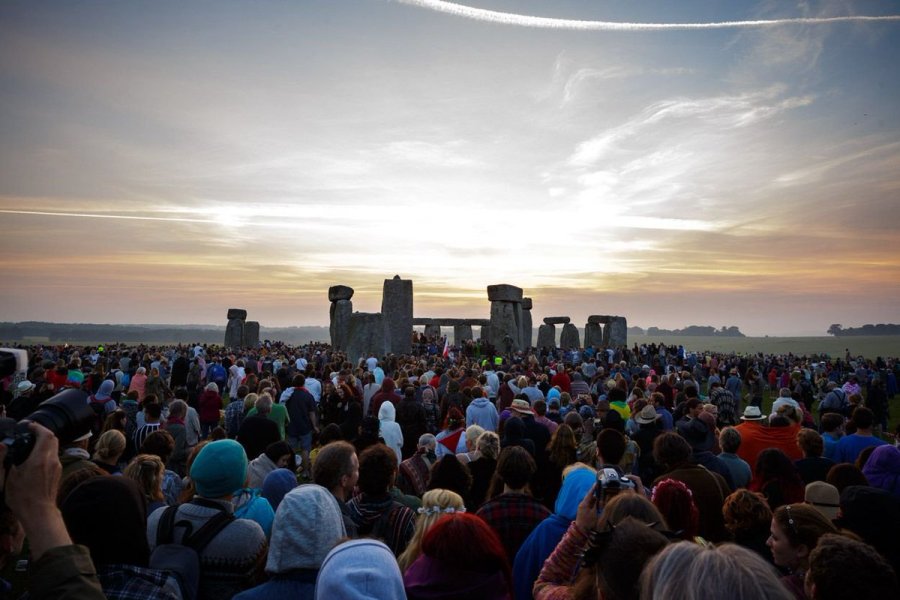
One thing is for certain: scholars will continue to theorize about who built Stonehenge, how it was constructed, and why. We may never find out the answers to these questions, but for now, we can all admire this iconic and mysterious monument.






